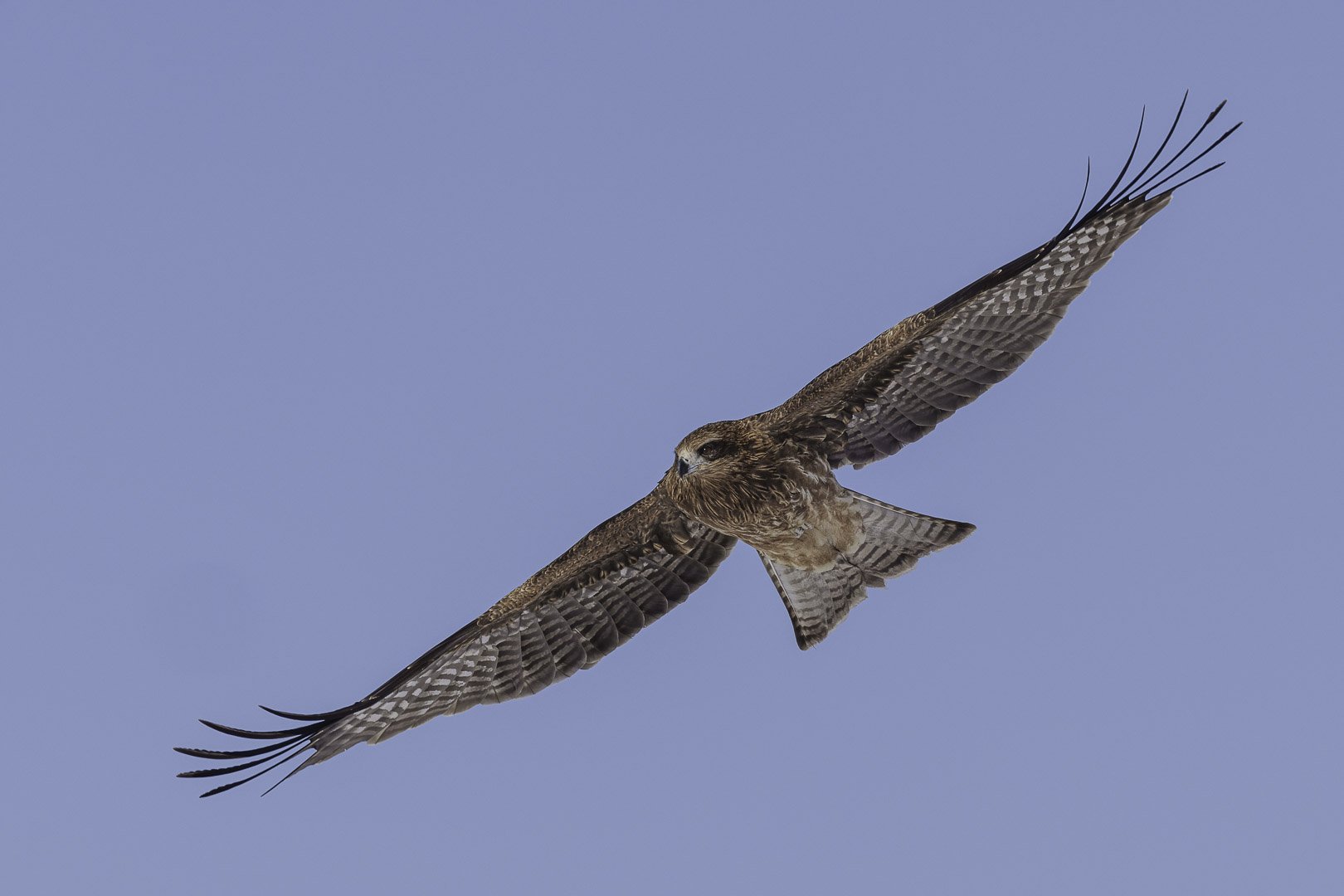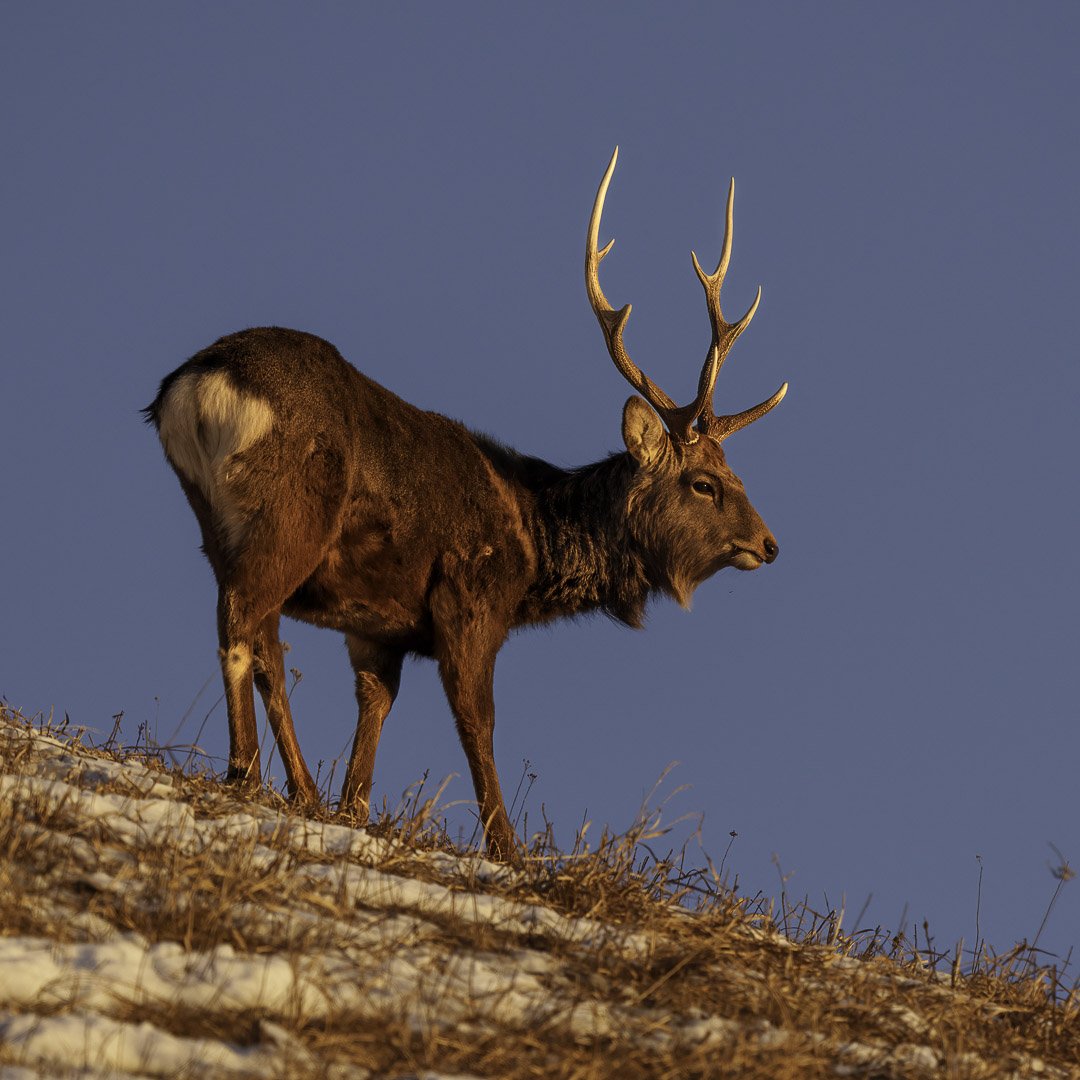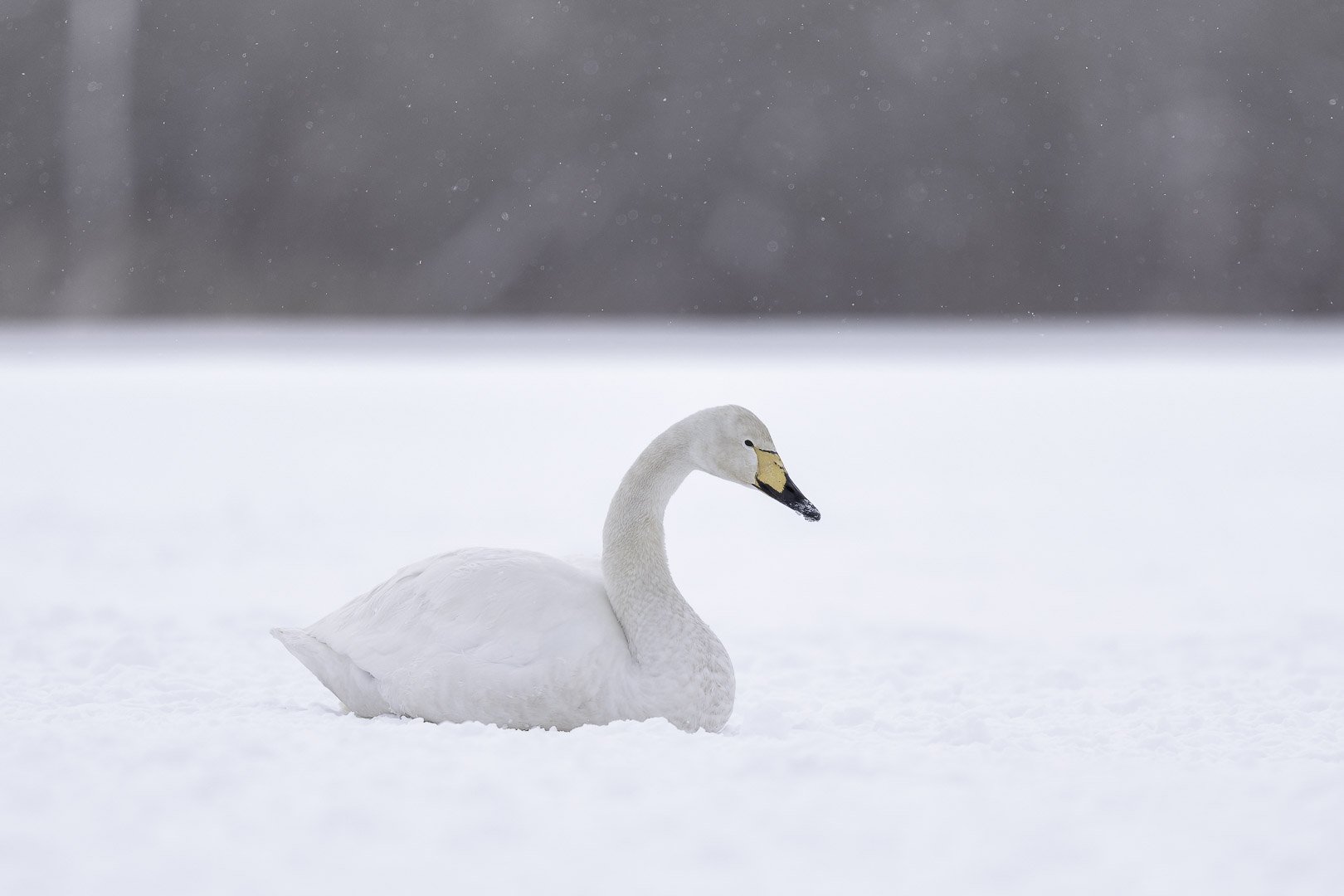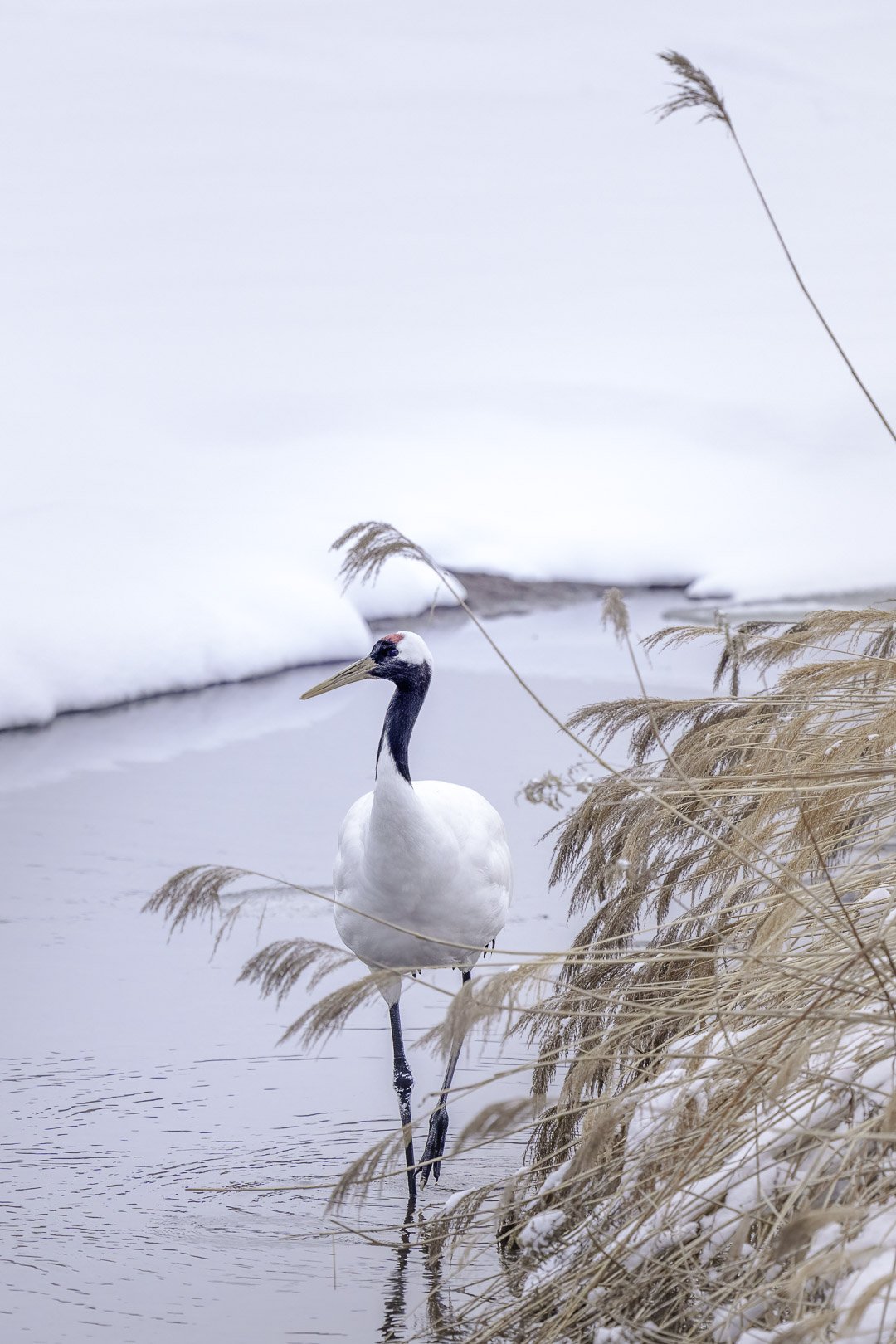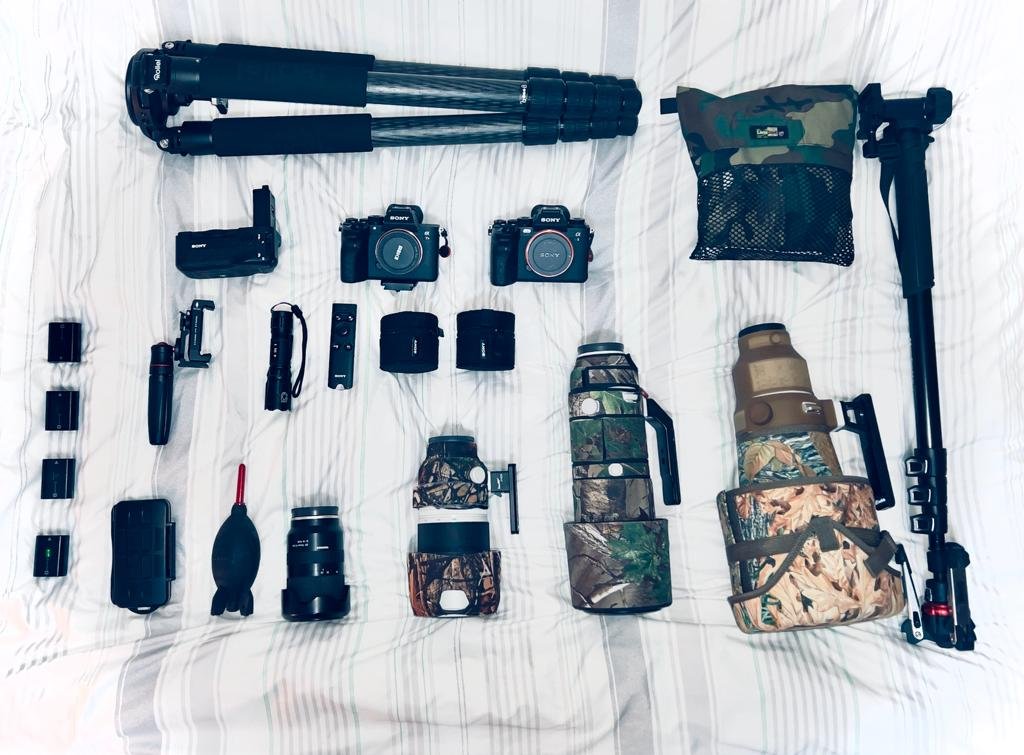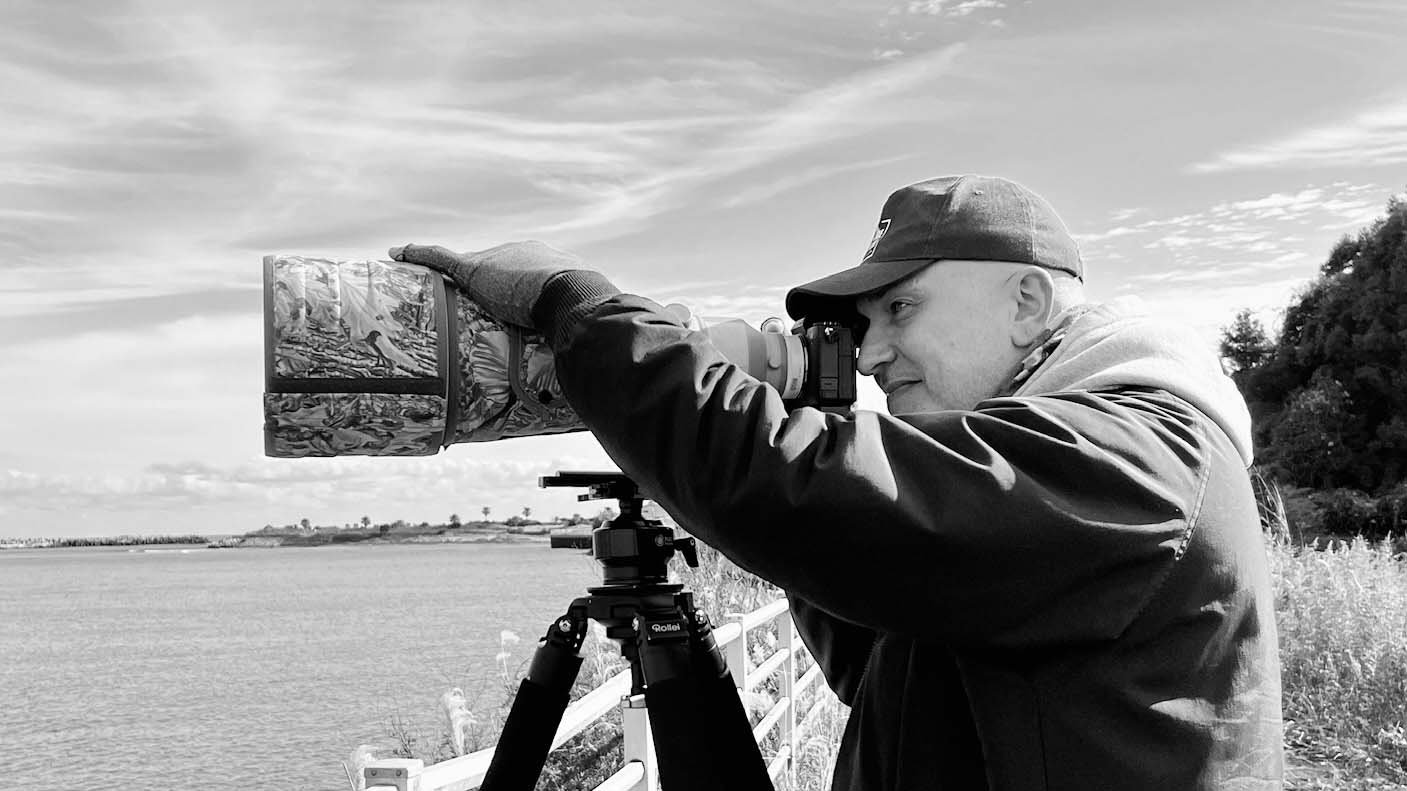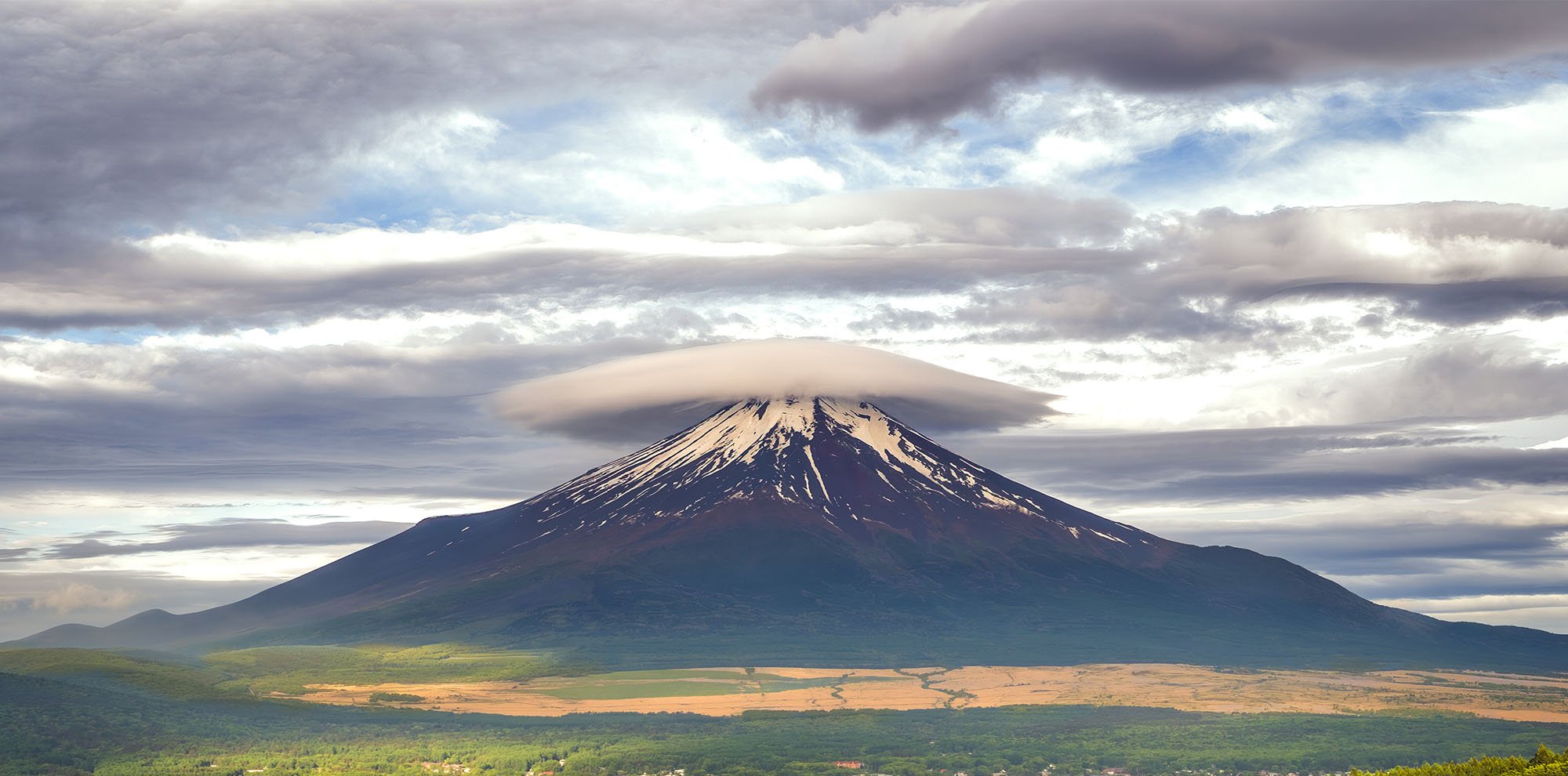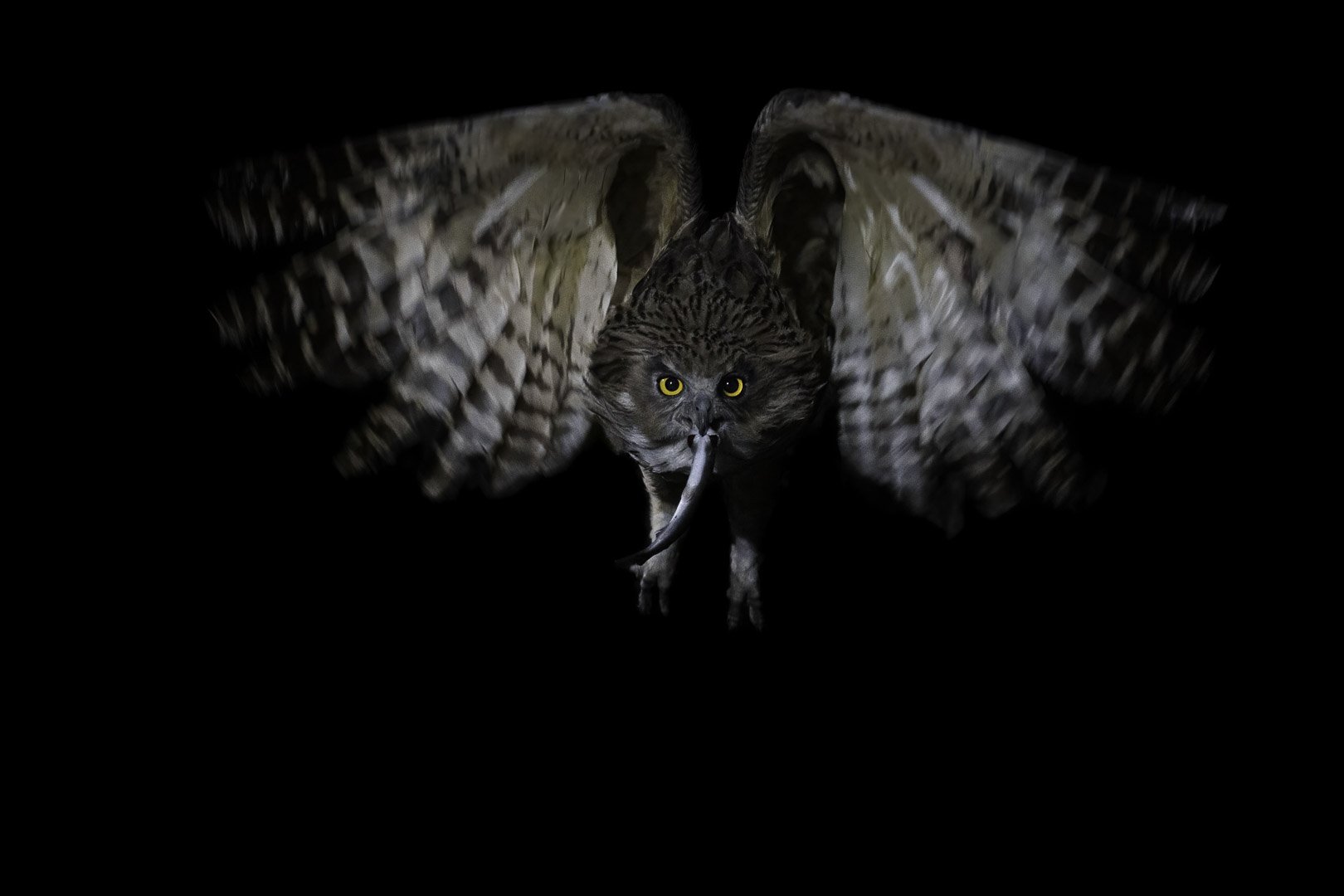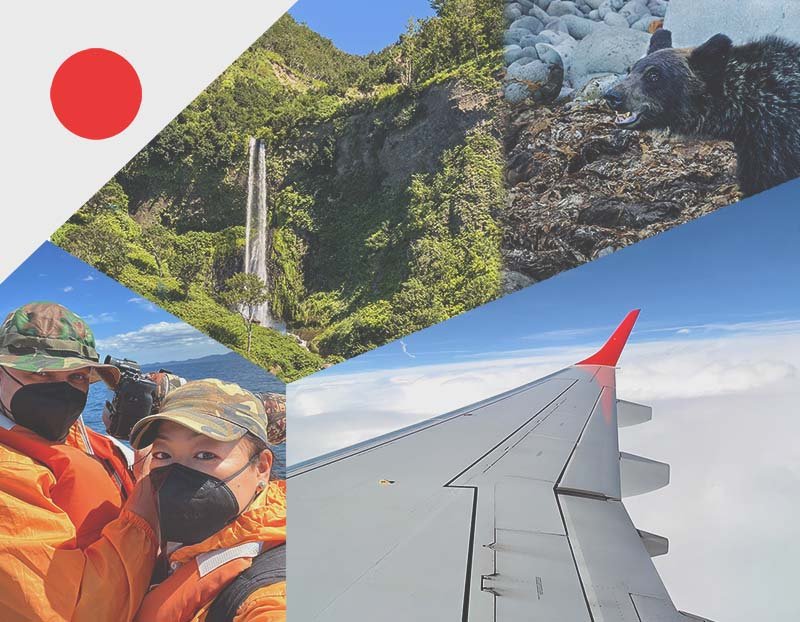Live Blog - Wild Japan Hokkaido #2
Me capturing the EZO-Owl in Hokkaido
For the next two weeks, I will be sharing updates from my Wild Japan trip (Winter 2023) in Hokkaido. In the first part of my live travel blog, I shared a few smaller but beautiful urban nature experiences.
Now, we head to Hokkaido, focusing on wildlife. This adventure promises a natural spectacle in record low temperatures. Our photographic focus will be on the Steller's Sea Eagle, the Red-crowned Crane, the EZO Fox, the EZO Owl, and much more.
Feel free to join me on this journey 😀 Enjoy!
Me after the Snowstorm in Rausu
02.02.2023 Rausu
Since yesterday, a snowstorm has held us in its grip. We've been partially cut off from the outside world, especially regarding the internet connection in our accommodation, which has been down since last Sunday due to the storm last weekend. Hence, no updates from me. I will catch up and create a separate blog page for those updates. This page already has a lot of content, and there's too much scrolling.
The photographic highlights of the past few days were the Steller's Sea Eagle, White-tailed Eagle, and Blakiston's Fish Owl.
Steller's Sea Eagle (Haliaeetus pelagicus)
28.01.2023 Lake Furen Hokkaido
I had been eagerly anticipating this moment. The Steller's Sea Eagle was one of the main reasons for this trip. From now on, 90% of the journey will focus on birds of prey. Tomorrow, we will continue to Rausu, a coastal town where we can photograph the Steller's Sea Eagles. Today, we made a day trip to Lake Furen, known for its abundance of birds of prey. The lake is completely frozen, the third-largest brackish water lake in Hokkaido. During this time, ice fishing is popular, and the fishermen throw unwanted fish onto the ice, attracting all kinds of raptors. We took advantage of this today, capturing nearly 4000 photos and numerous videos. It will take time to sort through everything. I conducted many tests with lenses and camera combinations. I'll write a separate article on this in the coming months.
For now, I've developed a few photos for you. Enjoy!
Two sika deer with antlers silhouetted against the sunset sky
27.01.2023 Kushiro Area Hokkaido
We started the day with no significant plans, just relaxing. Around noon, we set out from Kushiro, heading north along the coast without a specific destination, simply exploring and enjoying the sunny day. We encountered various sights and captured some beautiful shots of Sika Deer. Despite visiting small fishing villages, we saw no one, but plenty of deer, possibly over 100. The day ended with a picturesque sunset.
View from the Otowa-Bridge
26.01.2023 Kushiro Area Hokkaido
A selfie from us on the Otowa Bridge at sunrise
At 7 AM, we arrived at Otowa Bridge, which was too late for my liking since the sunrise was at 6:43 AM. My wife and I didn't leave early enough, and the icy roads further delayed us, preventing us from arriving before sunrise. When we pulled into the parking lot near the bridge, a crowd of photographers was already there. I can only imagine how crowded it will be in two weeks when the season starts, and photographers from around the world gather here. My mood wasn't great, since I prefer setting up my equipment and mentally preparing without any stress.
We parked the car, set up the tripod, mounted the lens on the camera, and headed to the bridge. Fortunately, a photographer vacated a spot that offered a good view of the river. The only problem was that I didn't know if the show was already over or just beginning. The shot I wanted was of cranes flying towards me in the beautiful morning light over the river.
I also brought my second camera set-up, the Sony 200-600 mm f5.6/6.3 G OSS with the a7R IV, and mounted the Sony 400 mm F2.8 GM OSS with the Sony A1 on the tripod. I alternated between the cameras, trying to capture the different lighting conditions.
My wife asked a Japanese photographer, whom we had met two days earlier when checking out the spot, if the birds had already left for the feeding grounds. She reassured us that we hadn't missed anything yet. So, we stood there and waited in -20 °C weather. I had packed the right clothes for such conditions. To give you an idea of how cold -20 °C is, you can see in the following picture how my breath condensed on the battery grip and display, freezing instantly as I looked through the viewfinder to take photos.
Frozen breath on the camera while photographing red-crowned cranes in -20 °C temperatures, on the Otowa Bridge
Around 8:30 AM, we decided to drive to our next destination. At Otowa Bridge, the sun was already too high, which meant there was backlighting, and the cranes didn’t seem like they were planning to move anytime soon. What makes this bridge special is that the river never completely freezes because hot springs flow into it. This also creates a beautiful scene with mist over the water. We were the last ones still standing on the bridge. My wife overheard a Japanese tour guide, who briefly stopped by with a customer, saying that the cranes wouldn’t head to the feeding grounds until around 10 AM due to the cold. Good to know, I thought.
Earlier, we had struck up a conversation with an English couple who were also waiting for the cranes to take flight. I suggested they go to the feeding grounds, where they could see the birds up close. They decided to head there right away since there wasn’t much more to see from the bridge.
EZO Owl in Tree Hollow
We then drove to our next destination, the EZO owl. This time, we went to a new spot recommended by our acquaintance from Sapporo. This spot was about a 10-minute drive from the bridge. Here, we immediately found what we were looking for: an old, thick-trunked tree with a large hollow, and inside sat the EZO owl. Unlike the last spot, there was an unobstructed view, though it was a bit farther away. I took the opportunity to photograph the owl with all my cameras, lenses, and teleconverters, switching between them. I captured a number of photos and videos. So, I’ll have plenty to do when I get back to Germany. But, of course, I’ve already edited a few pictures for you.
On the way back, a bird of prey was circling above us, appearing quite close. I seized the chance and snapped a few shots into the sky. It turned out to be a young Steller’s sea eagle. These birds have already impressed us greatly after the few encounters we've had in the past days. This gets me even more excited for the coming days, as starting tomorrow, the large raptors will be our focus.
Young Steller's sea eagle soaring high in a clear blue sky
It was a great day, and normally we would have headed back to our accommodation. However, we decided to visit one of the crane feeding grounds one last time and have lunch nearby. Here, we took countless photos again, which I will sort and develop at home at my leisure.
We had our lunch in a small restaurant with a fantastic view over a snow-covered field, occasionally crossed by flying cranes. It was the perfect ending to the day—good food with a great view.
Tomorrow, we will take it easy and explore the coastal strip towards Shiretoko.
Red-crowned crane with retracted legs, something we hadn't observed before
January 25, 2023 — Surroundings of Kushiro, Hokkaido
This morning, my wife and I decided that our goal for the day would be to see cranes and the EZO owl. The weather forecast predicted sunny skies in the morning, followed by stormy conditions around 11 AM. We had just finished breakfast and were enjoying the panoramic view of the city from the 12th floor when we saw dark clouds and snow flurries moving in. Despite this, we decided to stick to our plan—cranes first, then the owl. This owl was different from the one we photographed yesterday, based on a tip from an acquaintance.
Like in Mecklenburg-Vorpommern, Germany in the autumn, there are feeding grounds for the red-crowned cranes here. These endangered cranes are supported with food during the winter to help them survive. There are resident cranes and others that migrate from Russia to spend the winter in Hokkaido. There is a place similar to "Kranorama" at Günzer See in Germany, where you can observe and photograph the birds without disturbing them.
After a 45-minute drive through the snowstorm, we reached our destination. I took my two camera bodies and the Sony GM 400 mm F2.8 and Sony GM 100-400 mm F4.5/5.6 lenses. You don’t need a large focal length here, as the birds are quite close.
We ended up staying longer than planned because it was so enjoyable to watch and photograph the birds. We didn't visit the EZO owl afterward, as it would have been 3:30 PM by the time we left, and it would have been dark. But we’ve planned this for tomorrow. We'll go to the Otowa Bridge early in the morning before sunrise to observe the cranes at their roosting site and as they head to the feeding grounds. Then, we'll continue to see the EZO owl.
The weather just needs to cooperate, as a storm has started this evening. The wind is currently whipping through the streets. But I’m, as always, optimistic that tomorrow will be good. 😃
Here are some photos from today. Enjoy!
January 24, 2023 - Kushiro, Hokkaido
The snowstorm that began last night stopped in the early morning hours, allowing us to start our first exploration tour.
No Plan A, B, or C like yesterday. This morning, we made a new Plan A 😃. According to our friend, a photographer from Sapporo, we had a tip on where to find the EZO owl. So, we decided to look for this beautiful creature first and then head to see the red-crowned cranes at Otowa Bridge.
After breakfast, we set off. The roads, mostly not cleared due to last night's snowstorm, were still passable, although slowly. It took us about 45 minutes to cover 30 km. When we arrived at the location described to us, we couldn't find the elegant animal at first. But then we spotted it in one of the tree hollows among the closely standing trees. It was a wonderful start to our wildlife vacation.
On the way to see the cranes, my wife noticed two Steller's sea eagles sitting in the trees by the roadside. Unfortunately, I couldn't stop there as it was a highway, but I thought I’d eventually get a chance to see them up close. It didn’t take long before I saw one sitting in a treetop. This time, I could take the opportunity to photograph it, even though it was quite far away. My first Steller's sea eagle—they truly live up to their name. You can spot their massive silhouette from a distance.
A fantastic experience, along with spotting Sika deer, white-tailed eagles, and red-crowned cranes. Today's exploration was a complete success 😃.
I mostly photographed with the Sony A1 and the 400 mm f/3.8 + TC 1.4.
I’ve quickly developed a few photos, which you can see below this text. Enjoy!
EZO owl - Sony A1 + 400 mm F2.8 GM OSS + TC 2x – 800 mm
January 23, 2023 — Tokyo / Hokkaido
07:00 AM — We are on our way to Haneda Airport, where our flight will depart at 11:15 AM. I am very excited and at the same time curious about how the weather situation will affect our trip. For days, the Japanese news has been reporting about a cold wave that happens only once every 10 years. This cold wave is coming from Russia, where it has reportedly reached as low as -65 °C in some places. Well, hopefully, it won’t be that severe 😃. Here’s the current weather situation:
Kushiro Temperature
10:24 PM - Kushiro
We arrived at our accommodation after a 3-hour drive. We checked in and then went out to get something to eat. Now, we're winding down the evening with a bath in an Onsen (hot springs) before our first exploration tour tomorrow morning. The weather today was sunny and everything was good, though it was cold. Around 6 PM, it started snowing and it hasn't stopped.
Plan A: In the morning, we will drive to Lake Furen to see our first Steller's sea eagles. After that, we’ll head to Otowa Bridge to scout out where exactly to park and set up. In the coming days, we’ll be here early, about 2 hours before sunrise, to set up our equipment. From this spot, we can observe the roosting place of the red-crowned cranes and photograph them as they head to the feeding grounds in the morning.
Plan B: After breakfast, we’ll head first to Otowa Bridge and then to Lake Kussharo. We passed by this lake on our way here, and it’s a gathering place for whooper swans and many other birds.
Plan C: Check out Otowa Bridge and focus on cranes and Sika deer, which search for food in this area. We already saw several Sika deer in the fields on our way here.
No matter which plan we follow, we are sure to see a lot, provided the weather cooperates 😀
For tomorrow, my equipment will be limited to the Sony 400 mm f/2.8 and the 100-400 mm f/4.5-5.6, combined with the Sony A1 and the a7R IV.
You can see what equipment I have in the following picture. Unfortunately, I didn’t have a good surface in our Tokyo apartment, so I spread the equipment out on the bed 😀. Sorry for not having a nicer background.













